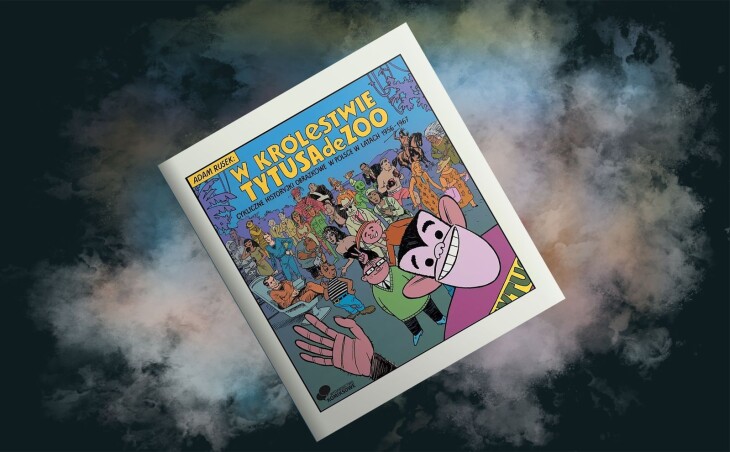Adam Rusek is a researcher of the history of Polish comics, as well as the author of the Old Polish Comics series. This time he brings us closer to cyclical picture stories published in Poland in 1956-1967. If you think that the story will only concern Titus de Zoo, you are very wrong! Get ready for a scientific journey into the past.
Scientifically about comics
I warn you right away – this is a scientific book. You will learn a lot of interesting facts and information about the history of Polish comics. Wydawnictwo Komiksowe also took care to create an attractive form, plenty of illustrations and examples of picture stories. However, its scientific nature remains unchanged and you must be ready for it. Adam Rusek gives us almost four hundred pages of an in-depth analysis of comics (which were not called that at that time) published in the press for both children and adults, but also in separate albums. The author took a closer look at one hundred and fourteen titles that appeared on the shelves between 1956 and 1967. In addition, there is also a look at the methods of advertising, publication, and the sources of popularity of some titles. If you want to find out what the difference is between comics and picture novels, read this bookThe Kingdom of Titus .
A very interesting historical period
The historical period discussed by the author, the 1950s and 1960s, is a specific period for Polish popular culture, which was beginning to crawl towards the West, while at the same time being sharply restrained by the authorities. We know well that the now iconic Kajko i Kokosz is largely a copy of the French Asterix . But how good! The reading often touches on the struggles of authors who were looking for their own style and experimenting with text placement and lines.
Attractive and reliable
As I have already mentioned, this is a scientific publication with all the advantages and disadvantages of this type of work. A bit harder to read, but still interesting and full of reliable information. This is a great advantage for the author who, despite writing in an academic language, is able to convey knowledge in a way that is attractive to the reader. It is also impossible to underestimate the enormous contribution of Adam Rusk, who certainly devoted a lot of time to examining the press from years ago in order to be able to share facts and thoughts with us.
We discover the unknown
Some readers may feel disappointed when they realize that they simply do not recognize most of the comics mentioned here. Of course, there is room here for flagship projects by Papcio Chmiel and Janusz Christa, who created during the period in question. However, the vast majority of publications are unsuccessful fiction experiments, stupid products that never permanently penetrated the audience’s consciousness. I’ve already mentioned how many titles are covered here. Be prepared that most of them are simply bad comics.
Back to the past
In the Kingdom of Tytus de Zoo is a fascinating read, especially if you spent your childhood reading Papcio Chmiel’s stories, like I did. Many of the titles mentioned here are simply foreign to me, but the author skillfully presented their authors, which makes the text very readable anyway. We usually read here about the clash between Creativity vs. Party apparatus. Let us not forget, however, that this is a scientific publication, and the footnotes alone occupy almost one hundred pages of the edition. So get ready not only for an interesting story, but also a huge dose of reliable knowledge.
Nasza ocena: 7.7/10
A fascinating presentation of the history of Polish comics from a scientific point of view. Lots of pictures inside!PROOFREADING AND EDITING: 8/10
STYLE: 8/10

